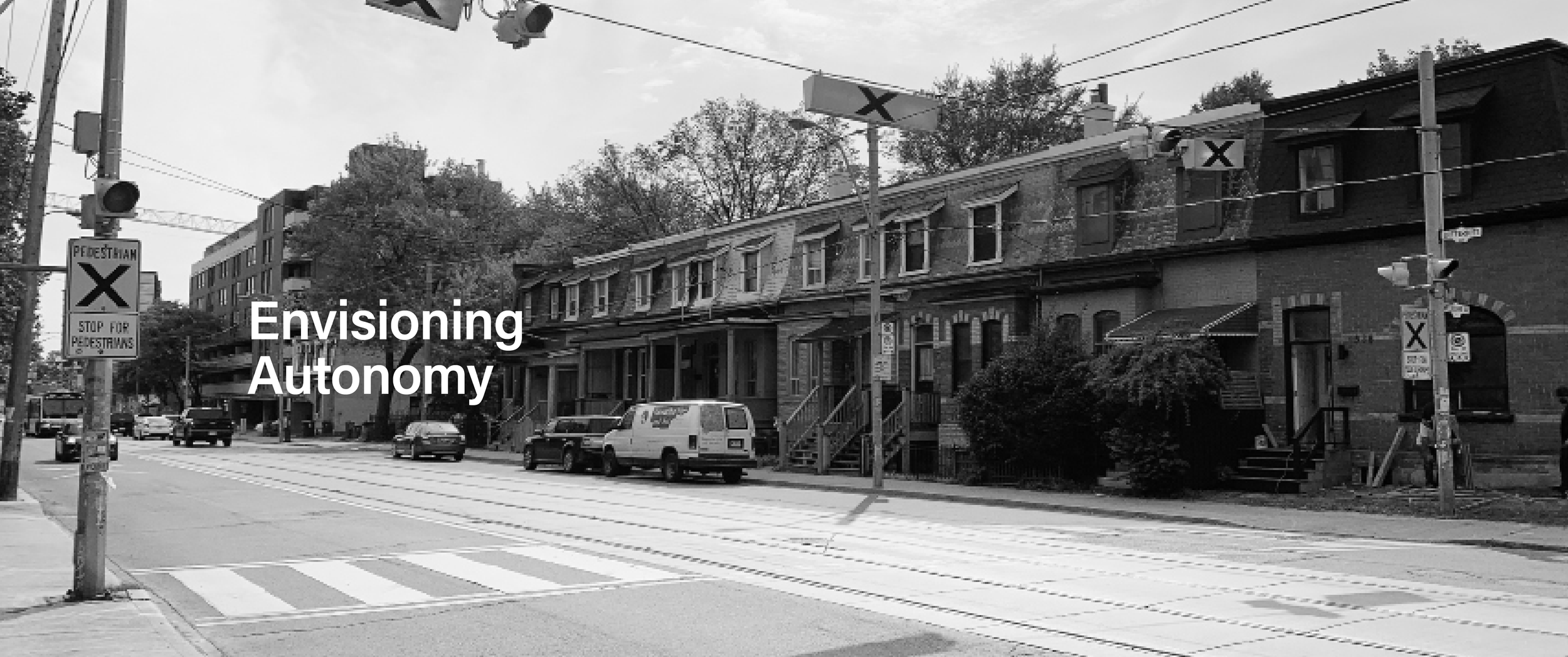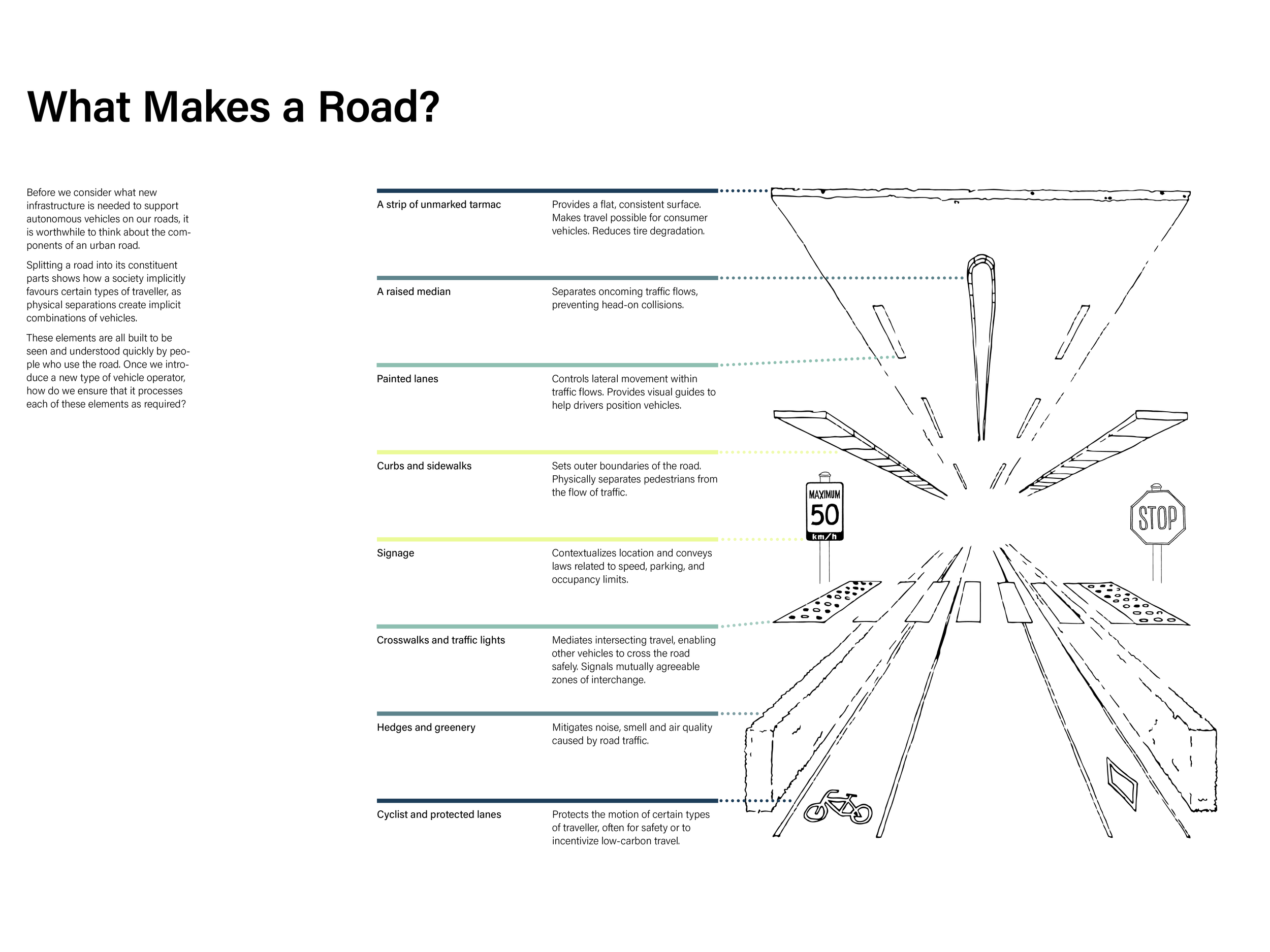
This year-long exploration of autonomous vehicles explored questions of ethics, pedestrian safety, and access to information. A series of accompanying discursive design objects provoke difficult but necessary conversations as we move towards a new transport paradigm.
This poster series comprises a kind of visual curriculum, both to bring users up to speed on the capabilities and technologies behind autonomous vehicles, and to start to tease at some of the problematics surrounding the implementation of partially autonomous vehicles in an environment that only partially supports their use. For example, how might we solve the problem of sidewalk-occupying delivery robots being unable to navigate pedestrian crosswalks efficiently? What ethical correlations emerge among cultural groups for the resolution of no-win ethical dilemmas where harm is unavoidable?
In gallery space, the posters are hung in two rows of six. The exhibit is structured “in curriculum order”, to best lead the viewer on a journey of progressive disclosure. Animations emulating several concepts from the posters play on a loop at the rightmost end of the space.
These interactive animations emulate augmented reality presence at intersections near OCAD University in Toronto. By overlaying citizens’ existing places of work with speculative elements, we reduce the cognitive distance from present day to possible futures. These animations are controlled entirely by user scrolling, giving them ultimate flexibility to ingest unexpected ideas at their own pace.
Autonomous Vehicle Signal Head
Interactive Animation
Intersection Management
Interactive Animation
An excerpt from the thesis’ abstract follows. The full paper can be read and downloaded from the OCAD University archive.
Autonomous driving is within reach. Machine vision and artificial intelligence are now mature enough to make driverless vehicle technology inevitable, but significant legal, ethical and design challenges remain.
Autonomous vehicles will offer precision, speed, and reduced reaction times, but these changes impact how pedestrians, cyclists, those using public transit and those with mobility issues navigate urban spaces.
Can the systems that will control networks of autonomous vehicles be designed to mitigate the safety imbalances that exist today for anyone trying to get across a city without a car?
What impacts will a network of vehicles that communicate invisibly and instantaneously have on the way we provide visual cues and signage to other road users?
When autonomous cars are inevitably tasked with choosing one life over another in serious accidents, are systems in place to evaluate bias in the algorithms used to make these decisions?
This project comprises discursive design objects intended to spur critical engagement with the legal and ethical ramifications of autonomous driving. By positing these issues in visually digestible form, the project aims to empower the public to better understand the implications of autonomous driving technology before its implementation.

















